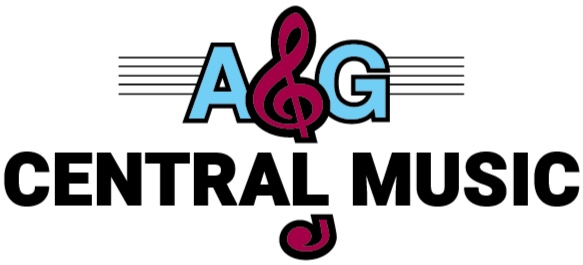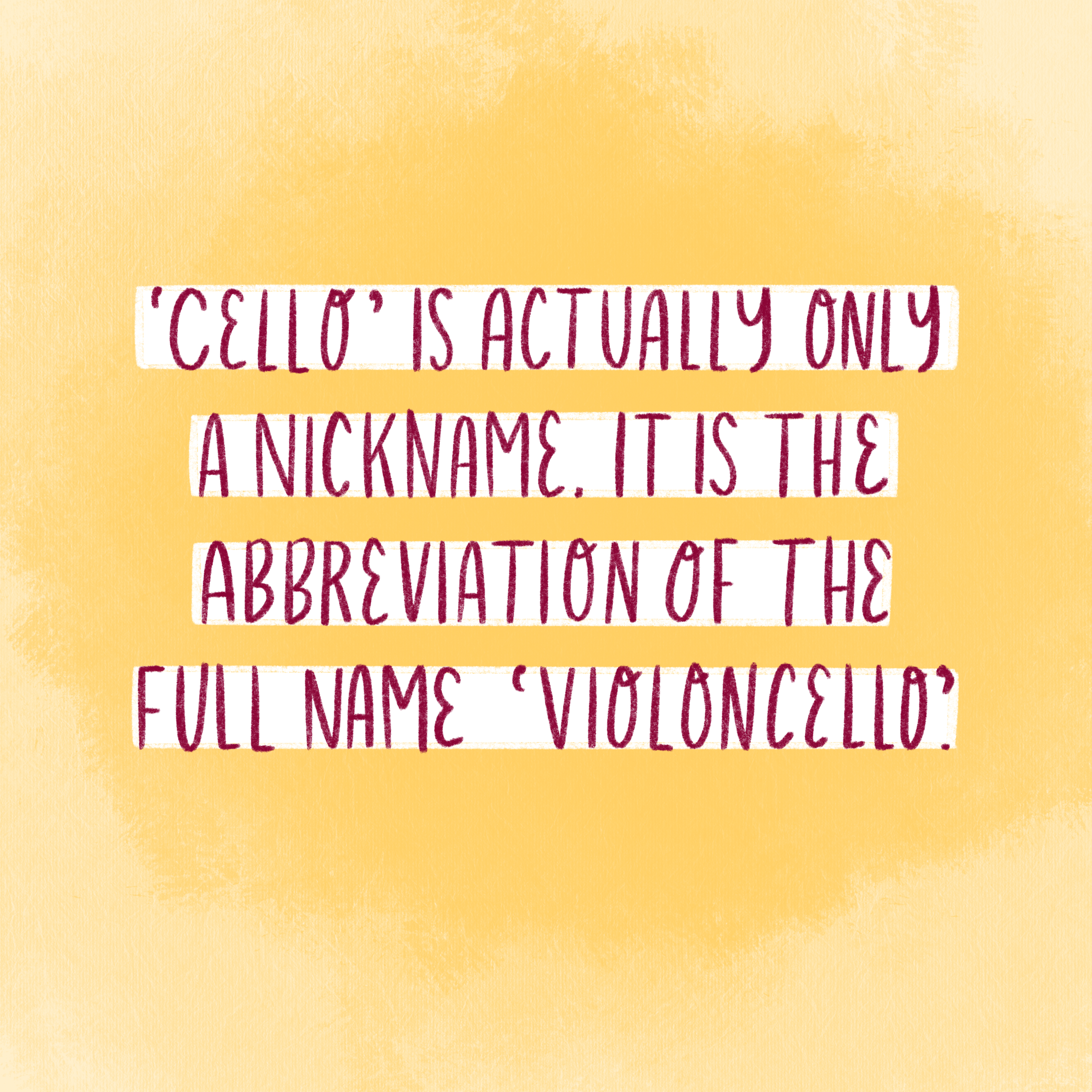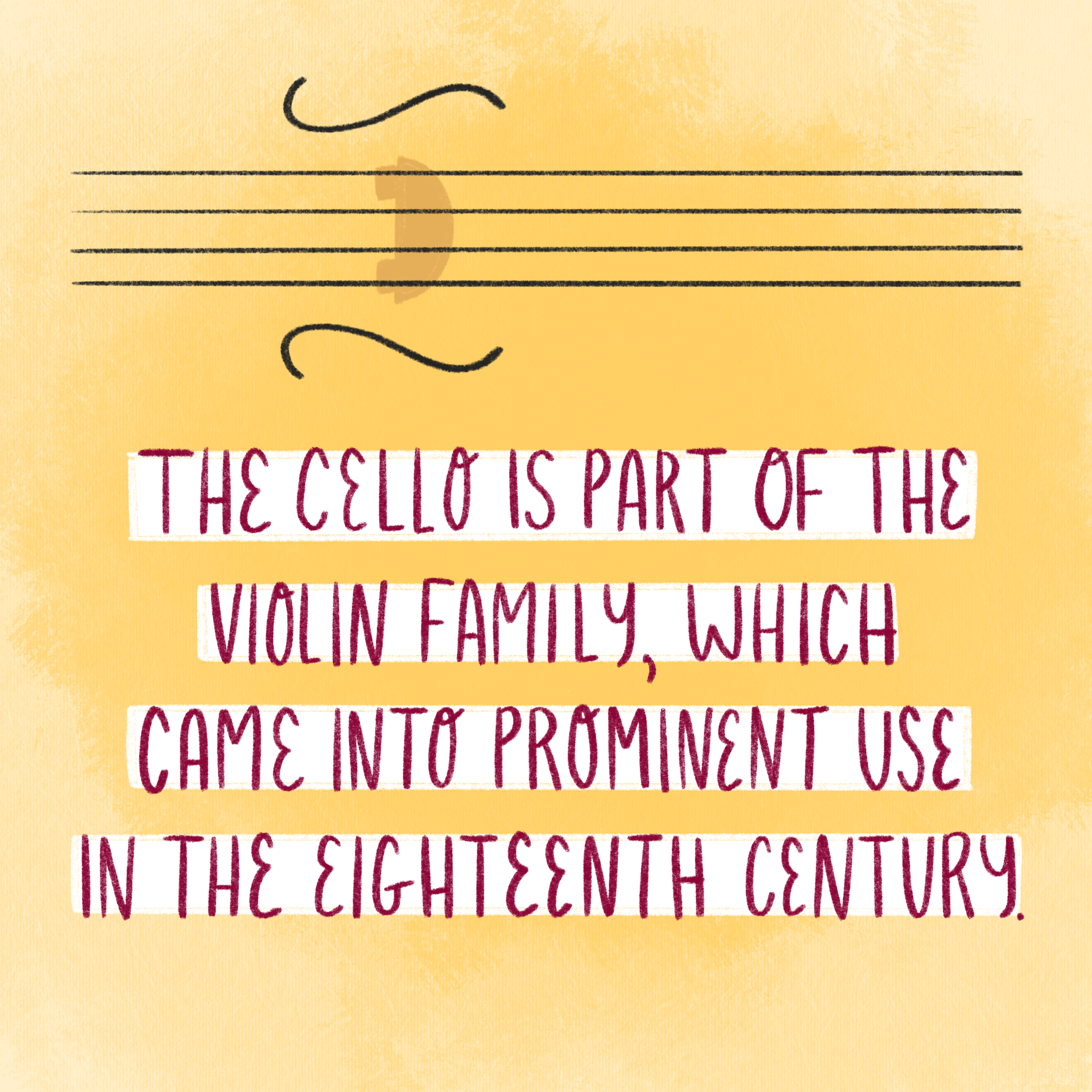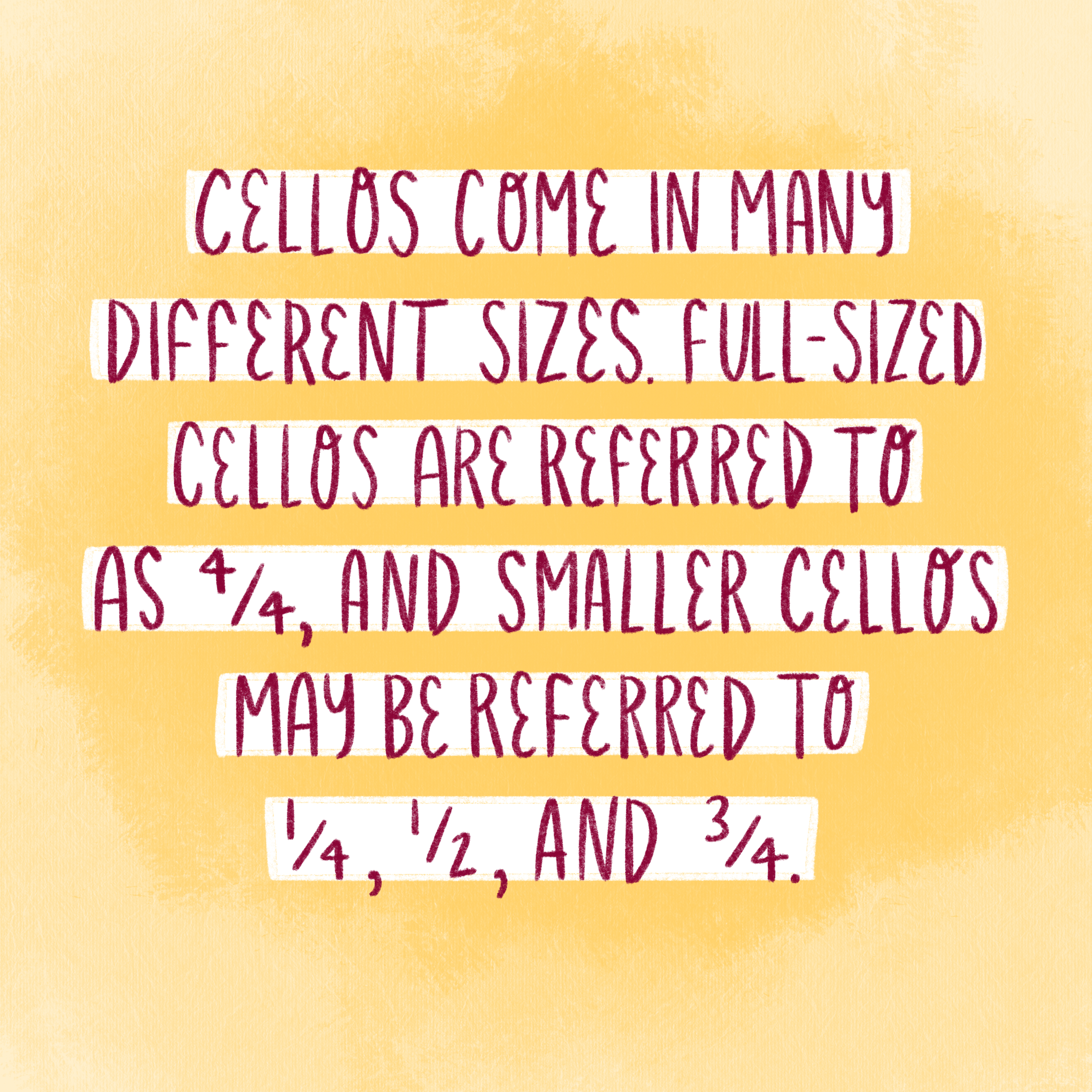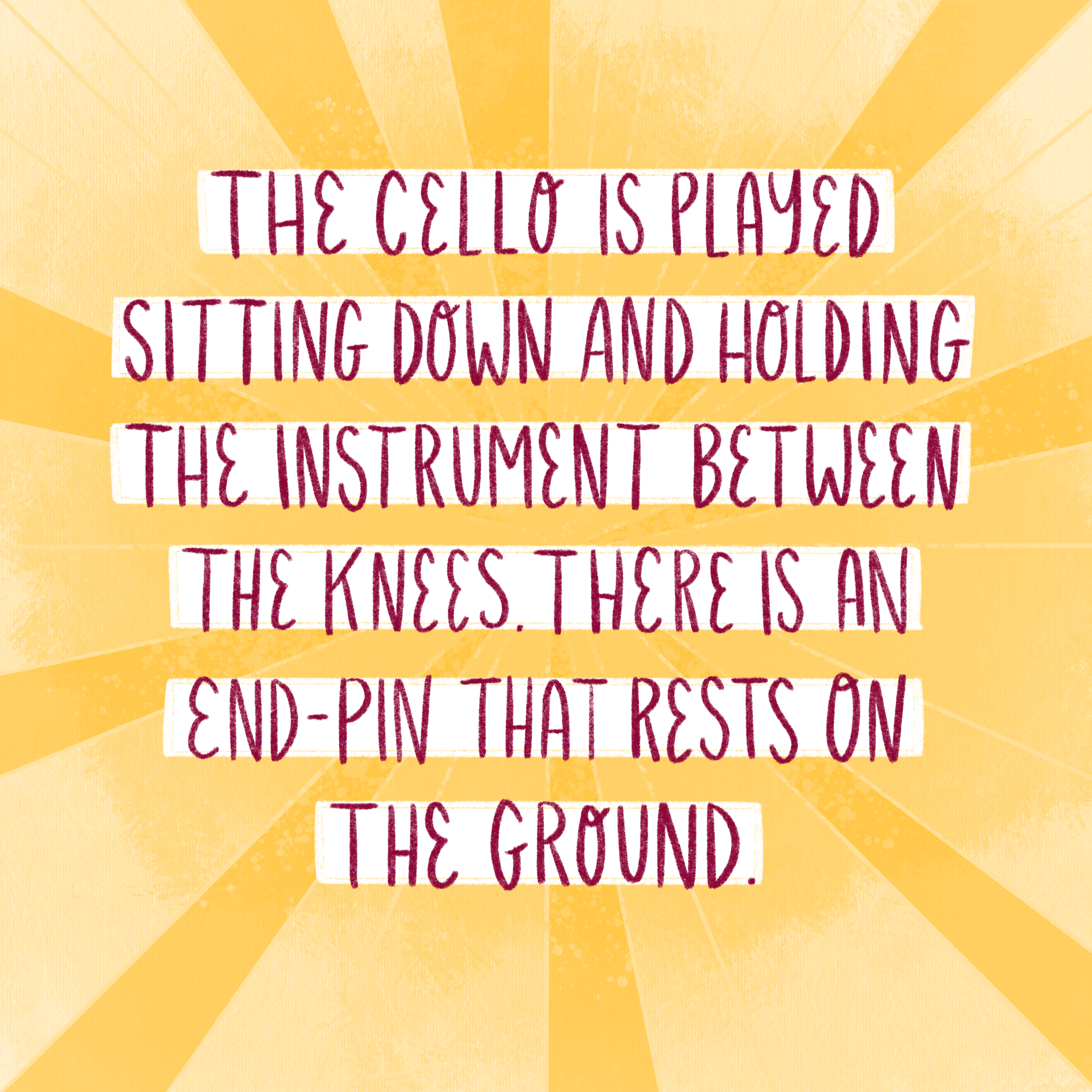The Cello
The cello is a member of the string family and is often referred to the violoncello. It is a bowed instrument that uses four strings that are pitched in perfect fifths: C, G, D, and A. The earliest cellos were developed in the 1500s by a man named Andrea Amati. They were often made with five strings, and its main purpose was to reinforce the bass line of the ensemble. This early instrument was called the viola da gamba. During the 17th century, the cello started to replace the viola da gamba as a solo instrument. Antonio Stradivari standardized the size of the modern cello, and a few of his original instruments are still in circulation today. Violoncello translates literally to “large small violins”, and you will notice that it does resemble a large violin.
Why Cello?
The cello is a versatile instrument, and can resemble the human voice in timbre. Typically, the cello supports the bass line of the ensemble. It is able to be a soloist instrument as well. Cellos are typically found in the symphonic orchestra setting, but can also play in a string ensemble, string orchestra, or string quartets. Often the cello will be joined by the low brass and woodwind players in a symphonic orchestra setting.
How Does Viola Contribute To A Band Or Orchestra?
The deep, warm tone of the cello plays a versatile role in the orchestra. It is pitched in the tenor range between the violas and basses. It often performs a countermelody or harmonic accompaniment to the violins.
The parts of a Cello:
The tuning pegs are found at the nut to adjust the pitch of the strings.
The bridge is found in the middle of the cello and holds the strings above the fingerboard. This allows the strings to vibrate freely.
The end pin comes from the bottom the cello and allows the musician to adjust the height of the instrument.
The bow is used by pulling across the strings which sets them in motion to produce sound.
How to pick a good Cello:
Getting your first cello is a big deal, here are some things to consider. What size cello does your student need? Your teacher or local music retailer should be able to help you measure your student and ensure they receive the right size. As your student grows, they will likely need to upgrade their cello to larger size. New or used? Your local music retailer will be able to advise you on the benefits and potential pitfalls of pre-loved instruments. Certainly a used instrument can be a great alternative to new. An online store may not be the best choice for purchasing cello. Support is especially important with string instruments, and a local music shop will be invaluable to your student’s journey. If you are going to buy a used cello, be sure the strings are in good condition, check the body of the cello for any cracks or open seams, be sure the bridge is properly fitted, the endpin and pegs work properly, and that strings vibrate freely with no “buzzing.”
Tips:
Use rosin. It creates friction between the bow hair and the strings, and helps to create sound.
Loosen your bow each time you’re finished playing. Not loosening the bow could cause the bow hairs to stretch out and the curve of the bow to lessen.
Use a rock stop. This will stop the cello form sliding away from you as you play.
Did you know?
Historically, the strings used on the members of the string family were made from sheep or goat intestines called catgut. These are still used today, but they’re not as common. Modern strings are made from aluminum and titanium, and they’re much easier to source and much more durable.
